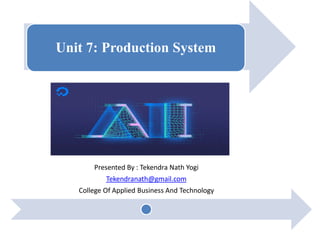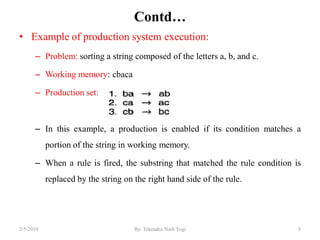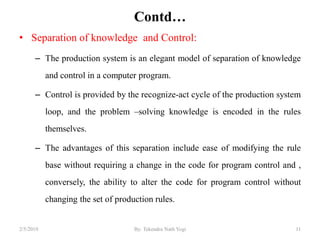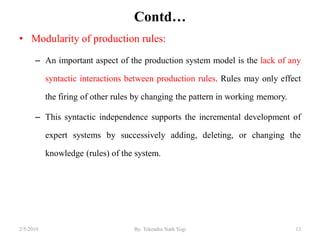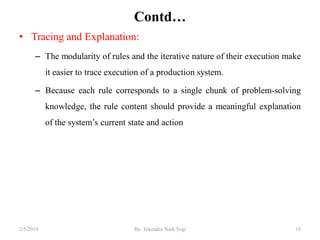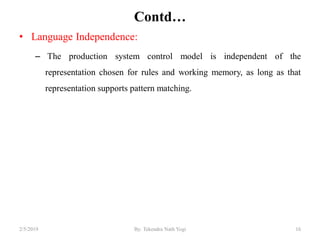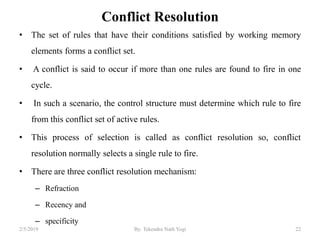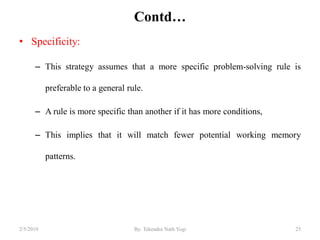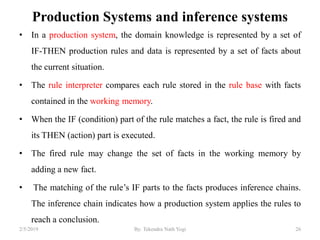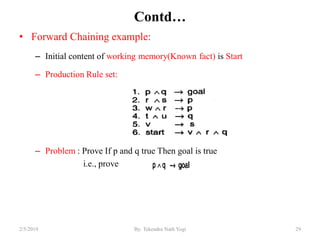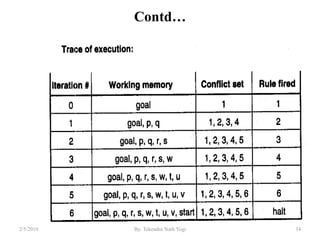This document provides an overview of production systems. It defines the key components of a production system including production rules, working memory, and a recognize-act control cycle. Examples of forward and backward chaining are provided. Advantages such as the separation of knowledge and control and mapping to state space search are discussed. Conflict resolution strategies like refraction, recency and specificity are also summarized.
